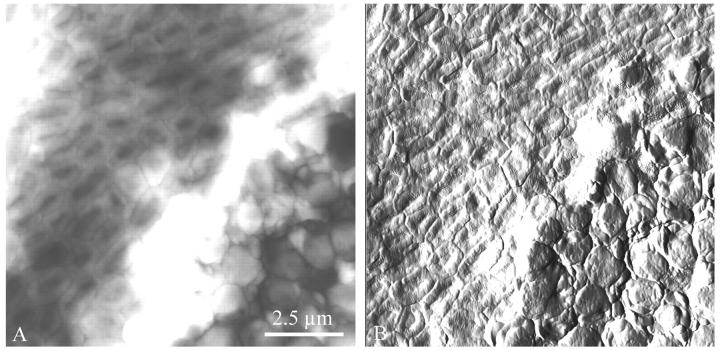FIGURE 5.
An advancing “tide” of bdellovibrios and bdelloplasts overtaking a flat expanse of uninvaded prey cells. In the deflection picture at right (B), it is clear that the uninvaded E. coli (top left) were slightly wrinkled in texture, whereas the bdelloplasts (bottom right) were smoother and more rounded. Notably, in the height image at left (A), the interface between the invaded and uninvaded cells, where the attacking predators and newly invaded bdelloplasts are located, was raised compared to the cells on either side by 150–250 nm. The prey bacteria, which have a life cycle with a much shorter period, multiplied at the edges of the circular community away from the predator bacteria at the center, and thus a gradient of predation stages was present on the filter.

